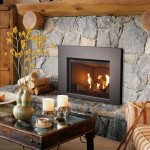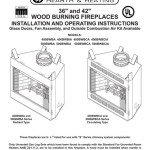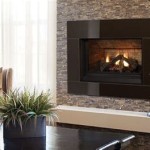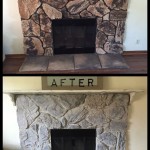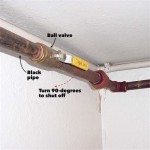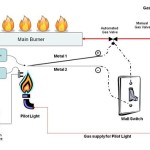Gas Burning Fireplace Inserts: An In-Depth Guide
Gas burning fireplace inserts are self-contained heating units designed to be installed directly into existing masonry or prefabricated fireplaces. They offer a convenient and efficient alternative to traditional wood-burning fireplaces, providing warmth and ambiance with the simple flip of a switch. These inserts utilize either natural gas or propane as fuel, offering a cleaner and more controlled burning experience compared to wood.
The popularity of gas fireplace inserts stems from their ease of use, improved heating efficiency, and reduced environmental impact. Unlike wood-burning fireplaces that require constant tending, fuel storage, and produce significant amounts of smoke and ash, gas inserts provide a consistent and manageable heat source with minimal maintenance. They are a practical choice for homeowners seeking to upgrade their existing fireplaces and enjoy the benefits of modern heating technology.
Understanding the Components of a Gas Fireplace Insert
A gas fireplace insert comprises several key components that work together to deliver heat and visual appeal. A primary element is the firebox, a sealed chamber where the gas combustion occurs. This firebox is typically constructed of steel or cast iron, chosen for their durability and heat retention properties. The firebox is designed to contain the flames and direct the heat outwards.
Within the firebox, a burner system is responsible for mixing gas and air in the correct proportions to create a controlled and efficient flame. These burner systems vary in design and technology, with some featuring multiple burners or sophisticated flame control mechanisms to produce realistic and visually appealing flame patterns. The burner's efficiency directly impacts the insert's heating capacity and fuel consumption.
Another important part is the glass front panel, which provides a view of the flames while also serving as a safety barrier. This glass is typically made of high-temperature ceramic material that can withstand the extreme heat generated during operation. The glass panel often includes a mesh screen or other safety features to prevent accidental contact with the hot surface.
The venting system is crucial for safely exhausting combustion byproducts outside the home. Gas fireplace inserts require either a direct-vent or B-vent system. Direct-vent systems draw combustion air from outside and exhaust flue gases directly outside through a coaxial pipe, maintaining a sealed combustion chamber. B-vent systems utilize existing chimneys for venting, relying on natural draft to exhaust the gases. The suitable venting system depends on the existing fireplace structure and local building codes.
Finally, the control system allows users to adjust the flame height, heat output, and other settings. This system can range from simple manual controls to sophisticated electronic systems with remote control capabilities and programmable thermostats. Some models also include safety features such as oxygen depletion sensors (ODS) that automatically shut off the gas supply if oxygen levels in the room become too low.
Advantages of Choosing a Gas Fireplace Insert
Gas fireplace inserts offer a wide range of benefits compared to traditional wood-burning fireplaces. A significant advantage is their heating efficiency. Wood-burning fireplaces typically lose a large percentage of heat up the chimney, while gas inserts are designed for optimal heat transfer into the room. Many gas inserts boast heating efficiencies of 70% to 85% or even higher, resulting in lower energy bills and improved comfort.
Another key benefit is convenience. Gas inserts require no wood chopping, stacking, or ash removal. A simple switch or remote control allows users to ignite the flame and adjust the heat output as needed. This convenience makes them a practical choice for busy homeowners who desire the ambiance of a fireplace without the hassle of traditional wood-burning.
Furthermore, gas fireplace inserts offer improved safety compared to wood-burning fireplaces. The sealed combustion chamber and controlled venting systems minimize the risk of smoke, carbon monoxide leaks, and chimney fires. Additionally, the glass front panel prevents sparks and embers from escaping into the room, reducing the risk of burns and property damage. The ODS also adds an additional safety layer.
From an environmental perspective, gas fireplace inserts produce significantly fewer emissions than wood-burning fireplaces. They generate less particulate matter, smoke, and greenhouse gases, contributing to improved air quality and reduced environmental impact. The use of natural gas or propane as fuel is generally considered a cleaner alternative to burning wood, especially in areas with air quality concerns.
Finally, gas fireplace inserts offer aesthetic versatility. They are available in a wide range of styles, sizes, and finishes to complement any décor. Homeowners can choose from traditional log sets, contemporary glass media, or river rock arrangements to create a unique and visually appealing focal point in their living space. The realistic flame patterns and customizable features allow for personalized ambiance.
Factors to Consider When Selecting a Gas Fireplace Insert
Choosing the right gas fireplace insert requires careful consideration of various factors. The size of the room to be heated is a primary determinant. Inserts are rated in British Thermal Units (BTUs), which indicate their heating capacity. Selecting an insert with an appropriate BTU rating ensures that the room is adequately heated without wasting energy. Over-sizing can lead to overheating, while under-sizing may result in insufficient warmth.
The venting system is another key consideration. As mentioned earlier, gas inserts require either a direct-vent or B-vent system. Evaluating the existing chimney structure and local building codes is essential to determine the appropriate venting option. Direct-vent systems offer greater installation flexibility and safety, while B-vent systems utilize existing chimneys. Proper venting is critical for safe and efficient operation.
Fuel type is also an important factor. Gas fireplace inserts are designed to operate on either natural gas or propane. Natural gas is typically more affordable and readily available in urban areas, while propane may be a better option in rural areas where natural gas lines are not accessible. The choice of fuel type will affect the insert's operating costs and installation requirements.
The insert's features and control options should also be considered. Some models offer advanced features such as remote control, programmable thermostats, and variable flame height settings. These features can enhance convenience and energy efficiency. Evaluating the control system and available options is important to ensure that the insert meets your specific needs and preferences.
Budget plays a significant role in the selection process. Gas fireplace inserts vary widely in price depending on their size, features, and brand. It's crucial to establish a budget beforehand and explore options within that range. Don't forget to factor in installation costs, which can vary depending on the complexity of the installation and the venting requirements. Consultation with a qualified HVAC professional or fireplace installer is advisable to obtain accurate cost estimates.
Finally, consider the aesthetics of the insert. Choose a style and finish that complements your existing décor and personal taste. Select a log set, glass media, or other decorative arrangement that creates the desired ambiance. Remember, the fireplace insert will be a focal point in your living space, so choose one that you find visually appealing.
Gas burning fireplace inserts provide a practical, efficient, and visually appealing alternative to traditional wood-burning fireplaces. By understanding the components, advantages, and selection criteria outlined above, homeowners can make informed decisions and choose the right insert to meet their heating needs and aesthetic preferences.

Gas Burning Fireplace Inserts Sierra Hearth And Home

Gas Fireplace Inserts The Place Fairfield

Belmont Small Gas Insert

Gas Burning Fireplace Inserts We Install

Nfi Certified Gas Fireplace Insert Installations Buffalo Rochester Ny

Fireplace Insert Installation Wood Inserts Gas Pellet And Electric

Gas Fireplace Inserts Modern Burning Fort Collins Fireplaces

Fireplace Inserts Wood Gas Pellet

Fireplace Insert Guide Fireplaces Direct Learning Center

Timberwolf Tdi3n Gas Burning Fireplace Insert Rockford Chimney
Related Posts

